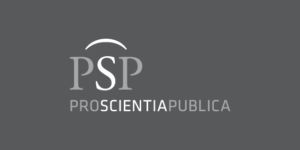Ethnomathematics: Mathematical Activities of Hand-drawn Batik Craftsmen Community in Giriloyo, Yogyakarta, Indonesia
DOI:
https://doi.org/10.15503/jecs2025.2.433.449Słowa kluczowe:
Hand-drawn Batik, Ethnomathematics , Measurement, Pattern-Making, EstimationAbstrakt
Aim. This study is an ethnomathematical study that aims to describe and interpret the Mathematical Activities of the Hand-drawn Batik Craftsmen Community located in Giriloyo, Yogyakarta, Indonesia
Methods. This report utilized an ethnographic method, with data being obtained through observation, interviews, documentation, and Focus Group Discussion (FGD). The subjects of the study were a group of five hand-drawn batik craftsmen from Giriloyo, Yogyakarta, Indonesia. A literature review on batik was utilized to complement the results obtained through the observations and interviews. Following that, the data was analysed qualitatively.
Results. From the data analysis, it was found that this community engaged in mathematical activities during hand-drawn batik production which include measuring, pattern-making, and estimating. This is reflected in: first, their method of taking measurements and using units to arrange the batik motifs; second, pattern-making that can be seen in batik motifs, especially geometric motifs; and third, estimation activities observed in determining the price of a piece of hand-drawn batik.
Conclusions. The traditional activity of making batik with canting is culturally rich in values and philosophies that need to be preserved. Ethno-mathematical research on the activities of the hand-drawn batik community can yield products applicable to school lessons.
Pobrania
Bibliografia
Abdullah, A. A., Richardo, R., Rochmadi, T., Wijaya, A., & Nurkhamid. (2023). Ethnomathematics: Exploration in cultural heritage buildings in Yogyakarta based on geometry perspective. AIP Conference Proceedings, 2540(1). https://doi.org/10.1063/5.0105858
Basuki, D. M. A., & Astuti, K. S. (2022). Nglowong Batik Techniques as One of the Local Culture Preservation. International Journal of Multicultural and Multireligious Understanding, 9(4), 406–413. https://ijmmu.com/index.php/ijmmu/article/view/3713/0
Brandt, A.L., & Chernoff, E.J. (2015). The Importance of Ethnomathematics in the Math Class. Ohio Journal of School Mathematics, 71, 31–36.
Budi, S., Bina, T., Afanti, & Mataram, S. (2023). Ikonografi Motif Parang dan Sido Batik Klasik Surakarta [Iconography of the Parang and Sido Motifs in Classic Surakarta Batik]. UNS Press. https://www.uns-press.online/2023/05/ikonografi-motif-parang-dan-sido-batik.html
Charitas, R., Prahmana, I., & Ambrosio, U. D. (2020). Learning Geometry And Values From Patterns : Ethnomathematics On The Batik Patterns Of Yogyakarta , Indonesia. Journal on Mathematics Education, 11(3), 439–456.
Creswell, J. W., & Creswell, J. D. (2018). Research design: qualitative, quantitative, and mixed methods approaches. Fifth edition. SAGE.
e. a. natanegara & Djaya D. (2019). Batik Indonesia [Indonesian Batik]. Yayasan Batik Indonesia. https://fliphtml5.com/bwgzh/itin/Batik_Indonesia/2/
Faiziyah, N., Khoirunnisa, M., Azizah, N. N., Nurrois, M., Prayitno, H. J., Desvian, Rustamaji, & Warsito. (2021). Ethnomathematics: Mathematics in Batik Solo. Journal of Physics: Conference Series, 1720(1). https://doi.org/10.1088/1742-6596/1720/1/012013
Fouze, A. Q., & Amit, M. (2023). The Importance of Ethnomathematics Education. Creative Education, 14(4), 729–740. https://doi.org/10.4236/ce.2023.144048
Gulo, W. (2002). Metodologi Penelitian [Research Methodology] (8th ed.). Gramedia Widiasarana Indonesia. http://repo.darmajaya.ac.id/4019/1/Buku-Metodologi-Penelitian-by-W-Gulo.pdf
Gumelar, P. C. (2019). Batik Extraculicular As a Means of Planting Values of Culture. Sunan Kalijaga International Journal on Islamic Educational Research, 3(2), 25–34. https://doi.org/10.14421/skijier.2019.2019.33.03
Hwang, J., & Ham, Y. (2021). Relationship Between Mathematical Literacy And Opportunity To Learn With Different Types Of Mathematical Tasks. Journal on Mathematics Education. 12(2), 199–222. https://doi.org/10.22342/jme.12.2.13625.199-222
Imawan, D. H., & Al Ghazali, M. N. (2021). The Influence of the Posonan Tradition at the Pathok Negoro Mlangi Mosque on Mad’u Behavior. Munazzama: Journal of Islamic Management and Pilgrimage, 1(1), 47–62. https://doi.org/10.21580/mz.v1i1.8788
Irawan, A., Lestari, M., Rahayu, W., & Wulan, R. (2019). Ethnomathematics batik design Bali island. Journal of Physics: Conference Series, 1338(1). https://doi.org/10.1088/1742-6596/1338/1/012045
Madden, R. (2010). Being ethnographic: A guide to the theory and practice of ethnography. Sage Publications.
Mahmudati, R., & Lailiyah, S. (2020). The Study of Ethnomathematic Objects in the Dieng Temple Wonosobo, Central Java. Matematika Dan Pembelajaran, 8(2), 133–143. https://doi.org/10.33477/mp.v8i2.1606
Malalina, M., Putri, R. I. I., Zulkardi, Z., & Hartono, Y. (2020). Ethnomathematics of fish catching exploration in Musi River. Journal of Physics: Conference Series, 1663(1). https://doi.org/10.1088/1742-6596/1663/1/012007
Manoy, J. T., & Purbaningrum, M. (2021). Mathematical Literacy Based on Ethnomathematics of Batik Sidoarjo. Jurnal Didaktik Matematika, 8(2), 160–174. https://doi.org/10.24815/jdm.v8i2.21644
Muhtadi, D., Sukirwan, Warsito, & Prahmana, R. C. I. (2017). Sundanese ethnomathematics: Mathematical activities in estimating, measuring, and making patterns. Journal on Mathematics Education, 8(2), 185–198. https://doi.org/10.22342/jme.8.2.4055.185-198
n.d. (2024). UN Tourism Announces Best Tourism Villages 2024 : 55 Rural Communities Shaping the Future of Sustainable Travel. UN Tourism. https://www.unwto.org/news/un-tourism-announces-best-tourism-villages-2024-55-rural-communities-shaping-the-future-of-sustainable-travel
Nuvriasari, A., Candrawati, K., Wicaksono, G., Lestianengrum, S., & Ayunda, S. E. (2022). Development of Education-Based Tourism and Expansion of Marketing Networks in Kampung Batik Giriloyo. IMPACTS: International Journal of Empowerment and Community Services, 1(1), 37–42. https://doi.org/10.30738/impacts.v1i1.13061
Nusantara, D. S., Ilma, R., & Putri, I. (2021). Designing Pisa-Like Mathematics Task Using A Covid-19 Context ( Pisacomat ). Journal on Mathematics Education, 12(2), 349–364. https://eric.ed.gov/?id=EJ1313713
Orey, D., & Rosa, M. (2007). Cultural Assertions and Challenges towards Pedagogical Action of an Ethnomathematics Program. For the Learning of Mathematics, 27(1), 10-16. http://www.jstor.org/stable/40248554
Pradana, K. C., Rizki Putra, A., & Rahmawati, Y. (2022). Ethnomathematics on Traditional Culture: A Bibliometric Mapping Analysis and Systematic Review on Database Scopus. International Journal Corner of Educational Research, 1(1), 1–8 https://doi.org/10.54012/ijcer.v1i1.61
Pramesti, N. A., Pamadhi, H., & Garbo, A. (2019). Local Wisdom Values in Kawung Batik and Its Relevance to Moral Education. In Kuswarsantyo, D. Sartono, A. N. Machfauzia, D. R. S. Ambarwati, & T. Herawan (Eds.), Proceedings of the International Conference on Art and Arts Education (ICAAE 2018) (pp. 178-182). Atlantis Press. https://doi.org/10.2991/icaae-18.2019.34
Pribudi, A. (2020). Community-based Approach to Sustain Batik Tourism Village Area in the Special Region of Yogyakarta (The Case of Giriloyo Village). Journal of Sosial Science, 1(4), 113–122. https://doi.org/10.46799/jsss.v1i4.47
Rahmawati, D., Noto, M. S., Subroto, T., Amiruddin, M. H., & Hafizatunnisa, H. (2024). The Exploration of Mathematics on Batik Trusmi. Rangkiang Mathematics Journal, 3(1), 11–26. https://doi.org/10.24036/rmj.v3i1.48
Richardo, R., Abdullah, A. A., Martyanti, A., Sholihah, D. A. & Nurshanti, W. (2020). Learning mathematics through Islam Nusantara culture: An etnomathematics study in Indonesia. Ethnomathematics Journal, 7(1), 30–35. https://doi.org/10.21831/ej.v1i1.33129
Richardo, R., Martyanti, A., & Suhartini. (2019). Developing ethnomathematical tasks in the context of yogyakarta to measure critical thinking ability. Journal of Physics: Conference Series, 1188(1). https://doi.org/10.1088/1742-6596/1188/1/012063
Ridha, P. N., Utami, N. R., & Pamadhi, H. (2019). An Axiological Study of Tumpal Batik Motif and Its Relevance to the Character Education. In Kuswarsantyo, D. Sartono, A. N. Machfauzia, D. R. S. Ambarwati, & T. Herawan (Eds.), Proceedings of the International Conference on Art and Arts Education (ICAAE 2018) (pp. 188-191). Atlantis Press. https://doi.org/10.2991/icaae-18.2019.36
Rosa, M., & Orey, D. C. (2011). Ethnomodeling: An Ethnomathematical View on Mathematical Modeling. RIPEM, 1(1), 19–35. https://doi.org/10.37001/ripem.v1i1.1126
Rosa, M., & Orey, D. C. (2023). Interações Entre As Perspectivas Socioculturais Da Modelagem Matemática E Da Etnomatemática Em Uma Abordagem De Etnomodelagem [Interactions between Sociocultural Perspectives of Mathematical Modeling and Ethnomathematics in an Ethnomodelling Approach]. Vidya, 43(2), 113–132. https://doi.org/10.37781/vidya.v43i2.4606
Sartono, D., & Retnowati., T. H. (2019). Study of the Value of Yogyakarta Batik Character and Its Implementation in Learning Batik in Vocational School. In Kuswarsantyo, D. Sartono, A. N. Machfauzia, D. R. S. Ambarwati, & T. Herawan (Eds.), Proceedings of the International Conference on Art and Arts Education (ICAAE 2018) (pp. 8-13). Atlantis Press. https://doi.org/10.2991/icaae-18.2019.2
Savitri, M. (2021). The role of local wisdom on the preservation of the Imogiri Royal Cemetery Site. Berkala Arkeologi, 41(1), 69–88. https://doi.org/10.30883/jba.v41i1.567
Spradley, J. P. (1979). The ethnographic interview (1st ed.). Holt, Rinehart and Winston, Inc.
Stacey, K. (2011). The PISA view of mathematical literacy in Indonesia. Journal on Mathematics Education, 2(2), 95–126. https://doi.org/10.22342/jme.2.2.746.95-126
Sudrajat, S., Winarto, A., & Wicaksono, B. (2023). Ethnomathematics of Kalimantan Batik in field Geometry learning in elementary school. International Journal of Trends in Mathematics Education Research, 6(1), 26–32. https://doi.org/10.33122/ijtmer.v6i1.172
Suprayo, T., Noto, M. S., & Subroto, T. (2019). Ethnomathematics exploration on units and calculus within a village farmer community. Journal of Physics: Conference Series, 1188(1). https://doi.org/10.1088/1742-6596/1188/1/012104
Supriono, P. (2016). Ensiklopedia The Heritage of Batik Identitas Pemersatu Kebanggaan Bangsa [Encyclopedia of The Heritage of Batik, Unifying Identity, National Pride]. Andi Offset Yogyakarta.
Umbara, U., Wahyudin, W., & Prabawanto, S. (2021). How to predict good days in farming: ethnomathematics study with an ethnomodelling approach. JRAMathEdu (Journal of Research and Advances in Mathematics Education), 6(1), 71–85. https://doi.org/10.23917/jramathedu.v6i1.12065
Wahida, A., Handayani, E. S., & Supriyadi, S. (2020). The Philosophical Values of Kawung Batik Motif in Contemporary Batik Painting. Mudra Jurnal Seni Budaya, 35(1), 76–82. https://doi.org/10.31091/mudra.v35i1.1001
Wahyudi, H., Widodo, S. A., Setiana, D. S., & Irfan, M. (2021). Etnomathematics: Batik Activities In Tancep Batik. Journal of Medives : Journal of Mathematics Education IKIP Veteran Semarang, 5(2), 305-315. https://doi.org/10.31331/medivesveteran.v5i2.1699
Wahyuni, & Pratiwi, S. H. (2023). Ethnomathematics in Aceh Coastal Children’s Football Game. Jurnal Ilmiah Sekolah Dasar, 7(1), 150–158. https://doi.org/10.23887/jisd.v7i1.49924
Widjanarko, H., Utomo, H. S. & Suratna. (2023). Unlocking Success for Cultural Tourism Villages in Yogyakarta: Insights from Wukirsari Village. In B. Sobirov, D. Sugandini & M. T. Multazam (Eds.), Proceedings of the International Conference on Advance Research in Social and Economic Science (ICARSE 2022) (pp. 505–511). Atlantis Press. https://doi.org/10.2991/978-2-38476-048-0_53
Zulkardi, Meryansumayeka, Putri, R. I. I., Alwi, Z., Nusantara, D. S., Ambarita, S. M., Maharani, Y. & Puspitasari, L. (2020). How Students Work With Pisa-Like Mathematical Tasks Using Covid-19 Context. Journal on Mathematics Education, 11(3), 405–416. https://doi.org/10.22342/jme.11.3.12915.405-416
Pobrania
Opublikowane
Numer
Dział
Licencja
Prawa autorskie (c) 2025 Ahmad Anis Abdullah, Rino Richardo , Muhammad Najib Mubarok , Widya Sekar Bayu

Utwór dostępny jest na licencji Creative Commons Uznanie autorstwa 4.0 Międzynarodowe.
CC-BY
Authors retain copyright and grant the journal right of first publication with the work simultaneously licensed under a Creative Commons Attribution License that allows others to share the work with an acknowledgement of the work's authorship and initial publication in this journal. All authors agree for publishing their email adresses, affiliations and short bio statements with their articles during the submission process.


